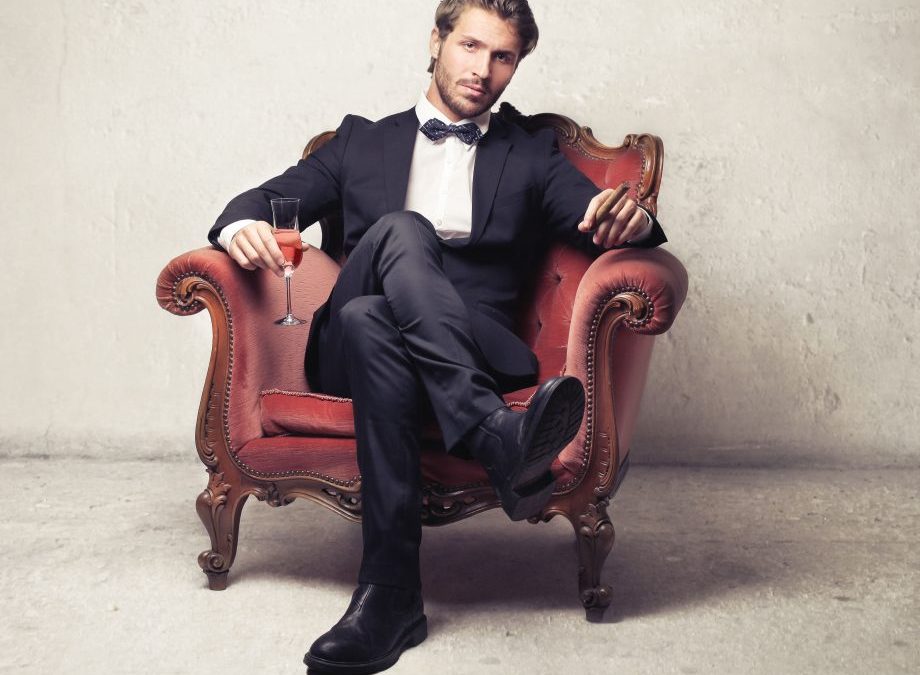It is the influence of numerous factors that let us decide whether or not a person should be considered as a gentleman. It is unlikely to discuss all of these factors at once – so we have chosen to create a series. In the following “Manhattan Business” issues we are going to focus on the important and fascinating elements of both the wardrobe and the habits of a real gentleman, as it indeed is not only the apparel being responsible for making a man a gentleman.
What does “gentleman” really mean?
Nowadays a gentleman is simply considered as a polite, generous and courteous man. In short – as a gentle man. In addition, he is also characterized by impeccable manners, an outfit fitting the occasion and treating with all due respect the people around him.
In the past, to be considered a gentleman one would have to be at least well-born. The “Polish Code of Honor” written down by Władysław Boziewicz in 1919 depicted a gentleman as a man of honor – a man of age with at least secondary education either engaged into a creative profession, or holding an office crucial to the community. Obviously a gentleman in those times had to be exceptionally courageous, heroic and outstandingly brave, as any accusation of cowardice had been considered as an ultimate insult. Moreover, a gentleman was to protect the good name of women, act accordingly to the law and remain loyal both privately and professionally.
A real gentleman was also distinguished by his impeccable outfit, which had to be adequate for the situation at all times. Even though it is common knowledge that a gentleman remains a gentleman whatever he pleases to wear, the attire really was and still is very important, as it serves to communicate who we are.
England is considered to be the birthplace of gentleman’s attire. It was precisely London to become the capital of European fashion during the 18th century, and remain regarded as such for decades. All the trends set on the Islands spread across not only Europe, but managed to reach the most remote corners of the world as well. That English style is still considered as classic all around the world, and all gentlemen who abide by its rules will look elegant no matter the place nor the situation. Furthermore, even though the capital of European fashion dispersed throughout the last few decades – London was followed by Paris, Milan and New York – a classicist will always base on the classic English style and then embellish it with some elements of, for instance, so fashionable nowadays Italian style in order to emphasize his personality. It is also worth noticing, that the gentleman’s outfit is not a costume. A gentleman wears the clothes he personally favors, not necessarily the ones that may impress somebody else. He only remains limited by the situation he dresses for.
A real gentleman has to have his own rituals. No matter whether it is a cigar, a decent beverage or grooming facial hair – it is worth knowing their origins and understanding why they are so important for the elegant man.
A gentleman remains also physically active, travels, is devoted to his hobbies and passions.
These are the topics we would like to discuss within the following “Manhattan Business” issues. We strongly believe that the thorough knowledge we are about to share with our readers will attract interest, and that the image of a gentleman we shall present to you, though classic, will be modern and supranational.

